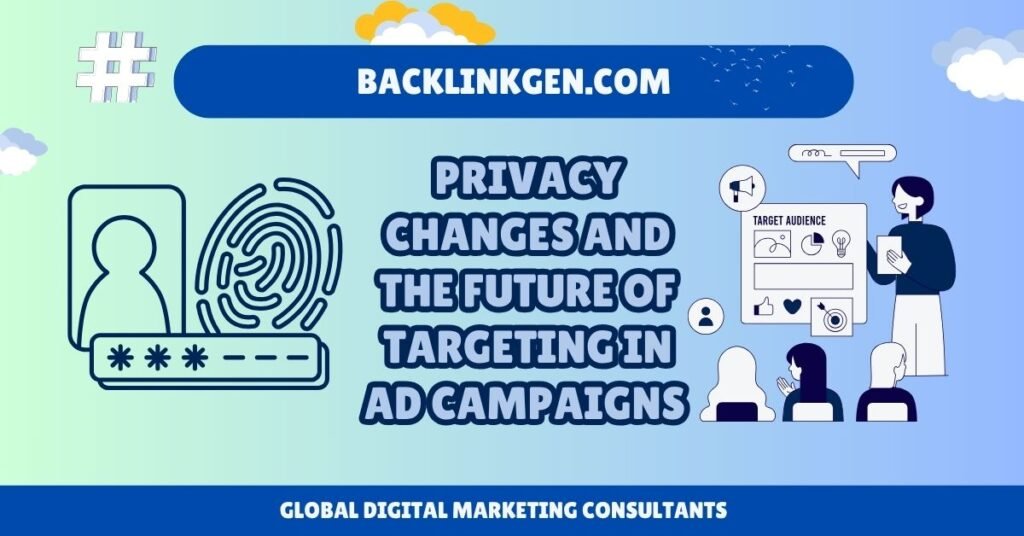By Amit T, Digital Marketing Strategist
Let’s be clear: the golden age of hyper-targeted, cookie-based advertising is over. With Apple’s iOS updates, the death of the third-party cookie, and a global wave of privacy regulations, the playbook we relied on for a decade is obsolete.
Many marketers are panicking. I see it as a forced evolution—a return to marketing fundamentals. The brands that win in this new era won’t be the ones with the best tracking tricks, but the ones with the strongest customer relationships.
Having navigated these shifts for my clients, I’ve moved from adaptation to a clear-eyed strategy for the future. Here’s what’s changed and how you can not just survive, but thrive.
Why the Walls Are Going Up: The Three Major Shifts
- The iOS Apocalypse (AppTrackingTransparency): When Apple gave users the simple choice to “Ask App Not to Track,” the overwhelming majority said yes. This shattered the link between mobile app data and web browsing data, crippling retargeting pools and conversion reporting for platforms like Meta.
- The Cookiepocalypse: Google is finally phasing out third-party cookies in Chrome. While delayed, it’s inevitable. These cookies were the invisible thread that connected user behavior across the internet, allowing for the creepy-but-effective “follow-you-everywhere” ads.
- Global Privacy Regulations (GDPR, CCPA): Laws worldwide are enforcing the principle that a user’s data belongs to them, not to advertisers. Explicit consent is now the law, not a best practice.
The result? Blind spots. Our view of the customer journey is fractured. Audience sizes for retargeting have shrunk. And attribution—knowing which ad led to a sale—has become a complex puzzle.
The New Foundations of Smart Advertising
The future isn’t about finding a one-to-one replacement for the cookie. It’s about building a new, privacy-centric model on three core pillars.
Pillar 1: First-Party Data is Your New Gold
If third-party data was cheap copper, first-party data is 24-karat gold. This is the information customers voluntarily give you through direct interactions.
- What it is: Email addresses, phone numbers, purchase history, survey responses, content download data, and support queries.
- How to Collect It:
- Value-for-Data Exchange: Offer must-have lead magnets (e.g., a detailed checklist, a webinar, a diagnostic tool) in return for an email.
- Loyalty Programs: Reward customers for sharing their data and preferences.
- Engaging Experiences: Use quizzes, interactive content, and polls that encourage user participation.
- Transparent Communication: Be clear about how you’ll use their data to improve their experience.
The Power Move: Use this data to build rich Customer Profiles. A customer who bought a specific battery from my e-commerce client is now tagged and can be retargeted with compatible solar panels or given loyalty perks. This is permission-based precision.
Pillar 2: Contextual Targeting Makes a Comeback
Remember when ads were based on the content of the page you were reading? Welcome back. Modern contextual targeting uses AI to understand the meaning and sentiment of a webpage’s content and places your ad in that relevant environment.
- The Old Way: Target a user who recently searched for “best running shoes” across the web.
- The New Way: Place your ad for running shoes on a fitness blog’s article about “Marathon Training Tips.”
Why it Works: You’re reaching a user when they are in a relevant mindset. It’s less intrusive, privacy-compliant, and often more welcomed by the user. AI-powered contextual platforms can now understand nuance far beyond simple keywords, matching your ad with content that shares a thematic connection.
Pillar 3: Embracing AI and Predictive Modeling
With less granular user data, we must rely more on AI to find patterns and predict behavior. This is the core of Google’s Performance Max and Meta’s Advantage+ shopping campaigns.
- How it Works: Instead of you defining a detailed audience, you feed the AI your creative assets (images, text, video) and your conversion goal (e.g., a purchase). The AI then uses its vast, aggregated, and anonymized network data to find users who behave like your best customers.
- The Mindset Shift: You move from being a targeting micromanager to a creative strategist and goal-setter. Your job is to provide the AI with high-quality creative and a clear objective, then trust it to do the heavy lifting.
Your Actionable Plan for 2024 and Beyond
1. Conduct a First-Party Data Audit
- Where are you collecting data today (website, POS, support)?
- What is the quality of that data?
- How can you connect these silos into a single customer view (a CDP or your CRM)?
2. Build a Value-Driven Lead Generation Engine
Stop gating generic content. Create “hero” lead magnets that are so valuable, users are happy to exchange their email. For a B2B IT client, we replaced a “Cloud Migration Guide” with a “Custom Cloud Cost Savings Calculator.” The qualified lead volume increased by 60%.
3. Test Privacy-First Platforms and Strategies
- Explore Google’s Privacy Sandbox: Get familiar with its proposed APIs for interest-based advertising without cross-site tracking.
- Test Contextual Networks: Allocate a portion of your budget to platforms like StackAdapt or GumGum to see how they perform for your brand.
- Implement Server-Side Tracking: This more resilient method of data collection gives you greater control and accuracy as browser restrictions tighten.
4. Refocus on Creative Quality
When targeting becomes less precise, the creative becomes more important. A generic ad won’t cut it. Your creative must:
- Grab Attention Fast: The first 3 seconds are everything.
- Speak to a Broader Audience: Since you’re targeting contexts and behaviors, not hyper-specific profiles, your message needs a wider appeal.
- Build Brand Trust: In a world of skepticism, a trusted brand name is a massive advantage.
5. Diversify Your Marketing Channels
Over-reliance on any single platform is a risk. Now is the time to build out:
- SEO & Organic Social: Build an audience you truly own.
- Email & SMS Marketing: Your most direct line of communication.
- Partnerships & Influencers: Leverage the trusted audiences of others.
“The future of marketing isn’t about tracking people better. It’s about understanding them better and earning the right to their attention.”
– Amit
The privacy revolution is the best thing that could have happened to marketing. It’s forcing us to be better, more creative, and more customer-centric. The brands that embrace this shift will build deeper loyalty and more sustainable growth than any cookie-based campaign could ever deliver.
About Amit: Amit is a digital marketing strategist who helps businesses navigate fundamental industry shifts, from privacy changes to AI adoption, building marketing engines that are both effective and future-proof.

